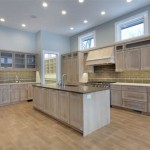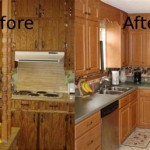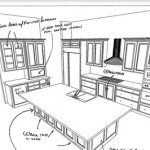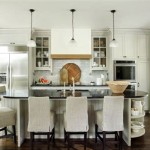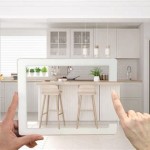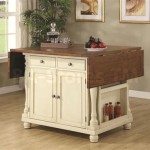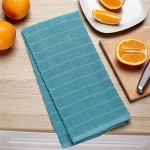Decorative Kitchen Plates For Wall Decoration: A Comprehensive Guide
Decorative plates, often associated with functionality in dining, have transcended their utilitarian purpose to become a popular element in interior design. Displaying decorative plates on walls, particularly in the kitchen, offers an avenue to introduce color, texture, and personality to what is often a highly functional space. This article will explore the different aspects of using decorative kitchen plates for wall decoration, encompassing selection, arrangement, installation, and stylistic considerations.
The appeal of using plates for wall decoration lies in their versatility. They can be incorporated into diverse design schemes, from rustic farmhouse to sleek modern aesthetics. The range of materials, designs, and sizes available allows for a high degree of customization, enabling homeowners to create unique and visually engaging displays. Considerations for material include ceramic, porcelain, glass, and even metal, each offering a distinct visual and tactile experience. The decorative elements themselves can vary from hand-painted scenes and intricate patterns to simple, minimalist designs. The key to successful integration lies in careful selection and thoughtful arrangement.
Selecting the Right Decorative Plates
The selection process is crucial in determining the overall impact of the plate display. Before acquiring any plates, it is important to consider the existing color palette and design style of the kitchen. Plates should complement the surrounding elements, such as cabinetry, countertops, and backsplash. A cohesive aesthetic is achieved when the plates harmonize with the existing decor, either by mirroring its colors and patterns or by providing a contrasting element that adds visual interest without clashing.
Size and shape are important considerations. A collection of plates of varying sizes can create a more dynamic and visually engaging display than a uniform set. Shapes beyond the traditional round plate can also add visual interest. Square, rectangular, or even organically shaped plates can introduce a modern or eclectic touch. Furthermore, the number of plates needed will depend on the size of the wall space and the desired impact. A small, sparsely decorated wall may only require a few carefully chosen plates, while a larger wall can accommodate a more extensive and elaborate arrangement.
The style of the plates should align with the overall design theme of the kitchen. For a farmhouse kitchen, plates featuring floral motifs, rustic landscapes, or vintage typography would be appropriate. A modern kitchen, on the other hand, might benefit from plates with geometric patterns, abstract designs, or minimalist color schemes. For a more eclectic space, mixing different styles and eras of plates can create a unique and personalized display. The key is to ensure that the plates, despite their differences, share a common thread, such as a unifying color or theme, to maintain visual coherence.
Beyond aesthetics, the condition of the plates is important. While vintage or antique plates can add character and authenticity, it is essential to ensure that they are structurally sound and free from significant damage. Chips, cracks, or excessive wear can detract from the overall appearance of the display. If considering vintage plates, examine them carefully for any signs of instability or deterioration.
Arranging Decorative Plates on the Wall
The arrangement of the plates is as important as the selection process. A well-planned arrangement can transform a collection of individual plates into a cohesive and visually appealing display. Several factors should be considered when determining the arrangement, including the shape of the wall, the size and number of plates, and the desired aesthetic.
Before attaching any plates to the wall, it is advisable to experiment with different layouts on the floor. This allows for easy adjustments and ensures that the final arrangement is visually balanced and pleasing. Consider creating a focal point by placing a larger or more visually striking plate at the center of the display. Smaller plates can then be arranged around the focal point, creating a sense of harmony and balance.
Symmetry versus asymmetry is a key decision to make when planning the arrangement. A symmetrical arrangement, where plates are arranged in a mirror image on either side of a central axis, can create a sense of formality and order. An asymmetrical arrangement, on the other hand, can feel more relaxed and informal. The choice between symmetry and asymmetry will depend on the overall design style of the kitchen and the desired aesthetic.
Spacing between plates is another important consideration. Too much space can make the display feel disjointed, while too little space can make it feel cluttered. The optimal spacing will depend on the size and style of the plates, as well as the overall size of the wall. A good rule of thumb is to leave enough space between plates so that each one is clearly visible and can be appreciated individually.
Consider the wall itself as part of the composition. The color and texture of the wall can influence the way the plates are perceived. A dark-colored wall can provide a dramatic backdrop for light-colored plates, while a light-colored wall can help to brighten up a collection of darker plates. The texture of the wall can also add visual interest. A textured wall, such as a brick or stucco wall, can provide a rustic or industrial feel, while a smooth wall can create a more modern and polished look.
Installation Techniques and Considerations
Proper installation is essential to ensure that the decorative plates are securely attached to the wall and do not pose a safety hazard. Several methods can be used to hang plates, each with its own advantages and disadvantages. The choice of hanging method will depend on the weight and fragility of the plates, as well as the type of wall.
Plate hangers are a common and reliable method for hanging decorative plates. These hangers typically consist of a coiled wire or spring mechanism that grips the edges of the plate. Plate hangers are available in various sizes to accommodate different plate diameters and weights. When selecting plate hangers, it is important to choose a size that is appropriate for the plate being hung. It is also important to ensure that the hanger is securely attached to the wall using appropriate hardware, such as nails or screws.
Adhesive discs or strips are another option for hanging decorative plates, particularly lightweight plates. These adhesives are designed to adhere to both the plate and the wall, providing a secure hold without the need for nails or screws. Adhesive discs are a good option for renters or those who do not want to damage their walls. However, it is important to choose a high-quality adhesive that is specifically designed for hanging plates. It is also important to follow the manufacturer's instructions carefully to ensure a secure and reliable hold.
For heavier or more valuable plates, it may be necessary to use a more robust hanging method, such as a screw-in plate hanger or a custom-made mounting system. Screw-in plate hangers are designed to be screwed directly into the wall, providing a very secure hold. Custom-made mounting systems can be designed to accommodate specific plate shapes and sizes, providing a very precise and secure fit.
Regardless of the hanging method chosen, it is important to ensure that the plates are level and evenly spaced. A spirit level can be used to ensure that the plates are hanging straight. Measurements should be taken to ensure that the plates are evenly spaced, both horizontally and vertically. Taking the time to properly install the plates will result in a more professional and visually appealing display.
In addition to the practical considerations of installation, it is also important to consider the aesthetic impact of the hanging hardware. Choose hardware that complements the plates and the overall design style of the kitchen. For example, brass or antique-style hangers can add a touch of vintage charm, while sleek and modern hangers can create a more contemporary look. The goal is to choose hardware that is both functional and visually appealing, enhancing rather than detracting from the overall display.
Ultimately, the successful integration of decorative kitchen plates as wall décor hinges on a thoughtful approach encompassing careful plate selection, strategic arrangement, and secure installation. By considering these elements, homeowners can transform a collection of plates into a personalized and visually engaging expression of style within the heart of their home.

13 Wall Plate Decor Ideas We Re Stealing From Instagram

Plates As Wall Decor

32 Decorative Plate Ideas Creative Ways To Style Your Walls

The Ultimate Guide To Decorating With Plates On Wall Laurel Home

30 Eye Catchy Kitchen Wall Décor Ideas Digsdigs

32 Decorative Plate Ideas Creative Ways To Style Your Walls

Unique Plate Wall Decor Vintage Style Display Ideas

Aesthetic Gallery Wall Ideas For Dishes Plate Decor

Your Guide To Decorating With Plates Ang Decorates An Interior Design Blog

Here S Proof Farmhouse Kitchens Are The Best
Related Posts

